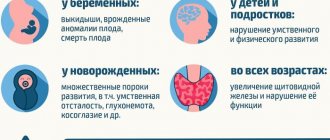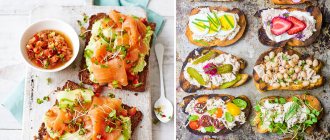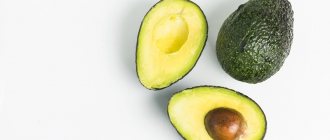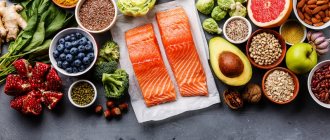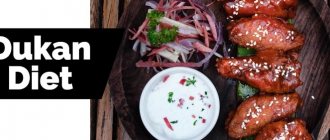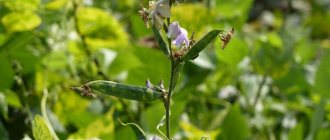Gluten-free and casein-free diets are used as part of therapy for children with autism. It is believed that the BGBK diet can reduce the psychopathic and neurological manifestations of the disease and make life easier for the child. Parents have to remember everything the baby can and cannot do, so as not to aggravate his condition. Children diagnosed with autism have impaired metabolic processes, so a special gluten-free and casein-free effective diet is selected for them.
The BGBK diet: what is it and what is it for?
Children with autism typically suffer from intestinal enzyme deficiencies. As a result, the body is simply unable to process and break down casein and gluten normally. They turn into opioids and cause harm to the body. Not only digestion suffers, but also the child’s behavior. It is believed that if all nutritional rules are followed, the baby’s condition will improve within 2 weeks.
The BGBK diet is necessary for:
- normalization of digestive processes;
- reducing the likelihood of intestinal infection;
- eliminating headaches;
- improving brain functions: concentration, memory, speech;
- normalization of behavior, elimination of aggression.
However, there are experts who doubt the effectiveness and appropriateness of the BGBK children's diet for the treatment of autism. This connection between nutrition and the improvement of the child’s brain activity has not been established unequivocally. However, many parents noticed a normalization of digestive function in the absence of gluten and casein.
Nevertheless, even if you have a diagnosis of autism, before starting a diet, you need to undergo an examination and make sure that it is these proteins that the child’s body is not able to digest.
BGBK diet: a complete list of prohibited foods
Casein is found in dairy products, while gluten is a plant protein that is usually found in grains. However, you don't have to give up all carbohydrates. It is necessary to exclude only those that are quickly absorbed and cause harm to the intestines. To avoid getting unwanted additives into your food, you need to cook only at home from proven products. Eating processed foods is dangerous.
A casein-free diet excludes the consumption of any dairy products (as well as fermented milk). You will also have to exclude from the child’s diet:
- chocolate and chocolate products;
- cereals;
- everything that contains grains: bars, muesli, breaded semi-finished products, cereal yogurts, etc.;
- soda;
- baked goods, flour products;
- fast food;
- sweets, including sweeteners;
- sausages;
- oat milk;
- store-bought sauces.
It is also important to avoid various food additives, especially E 953, E 965, E 636. You need to carefully read the composition of the products you buy and exclude harmful ones.
You should also be careful when choosing medications for children. Some syrups may contain harmful substances. Children with autism are at higher risk of intestinal fungal infections, so reduce their intake of starchy vegetables and fruits.
What can you eat on the GBH therapeutic diet?
The child will not have to endure hunger. There are a large number of healthy products without casein and gluten.
The BGBK therapeutic diet allows the consumption of the following products:
- fresh fruits and vegetables, stewed vegetables (except bananas and potatoes);
- lean meats and fish;
- chicken and quail eggs;
- dried fruits;
- nuts;
- sunflower seeds;
- homemade compotes without sugar;
- cornflakes;
- vegetable and ghee;
- natural fruit marmalade.
Nuts are good for the brain and contain a large amount of vitamins, but they are also quite difficult to digest, so children should be given them in very limited quantities. A handful per week will be enough.
You also need to carefully choose fish and meat and buy them only in trusted places. You can add food to your child’s diet only if you are completely sure of its safety.
Fresh vegetables and fruits are very healthy, but if a child has noticeable digestive problems, coarse fibers may be poorly absorbed and cause flatulence. In this case, it is better to prepare puree, steam vegetables, and bake apples.
Tofu cheese and soy dairy products are perfect for children's diets. If you choose the right menu, protein deficiency will not occur.
Your child can be given canned fish in oil, natural yogurt prepared at home, freshly squeezed juices, and bone broths.
BGBK diet - list of products
If you decide to start your child on a gluten-free/casein-free diet, it is very important to pay attention to some nutrients such as vitamin D, calcium, iron, protein and fiber that may be missing from this meal plan. In the table below we provide a list of foods that can help you get enough of these important nutrients:
| Nutrients | Required Products |
| Vitamin D | Rice, soy and almond milk; fish fat; tofu, eggs; short-term exposure to sunlight; biologically active additives. |
| Calcium | Rice, soy and almond milk; fortified orange juice; beans, broccoli, spinach, cabbage, tofu, tempeh; biologically active additives. |
| Iron | Red meat, pork, chicken (mostly dark meat), crustaceans, egg yolk, spinach, soy nuts, prunes, raisins; biologically active additives. |
| Protein | Eggs, nuts and seeds, lean meats, beans, peanut butter. |
| Cellulose | Legumes, fruits, vegetables, nuts, seeds; biologically active additives. |
How to replace gluten and casein in a GBC diet for children?
With a gluten-free and casein-free diet, the list of foods prohibited for consumption is very wide. We have to replace them with something so that the nutrition is complete. In fact, many manufacturers have already started producing gluten-free products. This could be cookies, pasta, cereal, candy. Of course, the cost will be higher, but the child will be able to eat well without harm to health.
Without flour products, children begin to quickly lose weight and become weaker. Regular wheat bread can be replaced with rice or corn bread. Occasionally you can give your child sweets, but not chocolate or ice cream. They should be replaced with natural marshmallows, marmalade or fruit juice, and candies.
Cow's milk is replaced with soy and coconut milk. Soy milk can even be called homemade soy cheese. It is much more difficult to replace cottage cheese, an important source of calcium. To compensate for the deficiency of this microelement, you need to eat more fruits and greens and drink soy milk.
Instead of soda, the child is given natural compote or fruit drink. It is more difficult to replace fast food, which has become very popular. You will just have to distract him from it, ask guests not to bring harmful goodies.
The connection between gluten and casein and autism
Suggestions linking gluten and casein to autism began in the 1970s.
A theory that remains unproven is that children with autism spectrum disorder (ASD) are unable to digest dietary proteins such as gluten and casein, resulting in the formation of opioid-like peptides. Children with autism are also believed to have leaky gut syndrome. In this syndrome, opioid-like peptides can cross the intestinal lining into the bloodstream and travel through the bloodstream to the brain, causing the neurobehavioral symptoms we know as ASD. Eliminating foods containing gluten and casein from a child's diet (called a gluten-free, casein-free diet or GBFC diet) is thought to reduce autism symptoms. Some parents say that the BGB diet for autism reduces the symptoms of this painful mental condition in their children. The researchers, however, found little evidence to support a gluten- and casein-free diet and the leaky gut theory. Several studies of the GBC diet in children with ASD have found that eliminating gluten and casein foods from a child's diet does not improve social skills or communication, nor does it improve sleep duration or activity. However, it is possible that some children with ASD who have significant gastrointestinal problems may benefit from a gluten-free/casein-free diet, especially if they also have celiac disease (see Gluten-free diet for celiac disease).
However, many parents try to eliminate gluten and casein from their child's diet. In fact, the BGB diet is the most popular complementary and alternative medicine treatment for children with ASD. This diet is generally considered safe, and some parents report that their children actually experience positive changes in their behavior as a result of this diet. But it is difficult to know whether these behavioral changes are directly related to the gluten-free, casein-free diet or whether they are the result of another type of treatment that may be given concurrently with the CGD diet.
It is also possible that some children are intolerant to lactose (a complex sugar found in milk), which can cause gastrointestinal distress leading to irritability. Other children may actually have celiac disease, which can also cause behavioral problems. When you eliminate foods containing lactose and gluten from the diet of children with autism, you may also notice an improvement in their behavior.
Rules and recommendations for an effective diet for children
Proper nutrition for autism requires preparation. It is not only children who need to prepare for the start of a diet change, but also their parents, who also experience severe stress and worry that their child will constantly suffer from hunger. But on store shelves you can find many products labeled “gluten-free” that are just as healthy and tasty as gluten-free ones.
When following the BCBC diet for children, you need to remember the following recommendations:
- Despite the fact that gluten-free and cozein-free meals can be tasty and healthy, often the child does not have enough vitamins. Before starting a diet, you need to contact a specialist and, on his recommendation, buy vitamin and mineral complexes.
- You cannot immediately deprive a child of the food to which he is accustomed. It is necessary to gradually remove harmful foods from their diet, replacing them with safer ones. For children with autism, the habit of eating the same thing is very important, so you need to carefully wean them off the habit.
- Sometimes an autistic child categorically refuses to eat something new. You need to try to captivate him in a playful way and decorate the food in an unusual way. Forcing him to eat will only provoke a negative attitude towards food.
- The rest of the family will also have to stick to the diet, at least at home, so that the child is not tempted to take something from another plate. It is difficult to explain to children all the intricacies of the disease so that he understands why mom can eat ice cream and hamburgers, but he cannot.
- Because of the food in kindergartens, you will have to refuse to attend them. Each child is not provided with separate meals.
- After several months of such a diet, it is necessary to donate blood to determine which vitamins and microelements are missing in the body.
It is important to remember that you must strictly follow the nutritional rules. Even a few prohibited foods can destroy treatment progress.
Pros and cons of a gluten-free and casein-free diet
Many people who are losing weight find benefits from such a diet. They note that you can quickly lose weight and cleanse your body. However, in the absence of indications and health problems, it is not recommended to adhere to this technique for a long time. It was developed for people who are intolerant to gluten and casein to reduce the severity of unpleasant symptoms. It is used exclusively for weight loss in small courses, with breaks and an expansion of the diet.
A positive feature is the beneficial effect of the technique on digestive function and intestinal function. The child's stool returns to normal, abdominal pain and flatulence go away. If your baby has had problems with weight, a diet will help normalize it and maintain it in this condition.
A positive thing is that the child does not feel hungry. He can eat in any amount, but due to the low calorie content of the food, weight problems will not arise. If a child has had skin rashes or pimples, if the rules of nutrition are followed, they will disappear.
A gluten-free and casein-free therapeutic diet for children also has its disadvantages:
- With a casein-free diet, the list of products excludes milk, which leads to the need to look for another source of calcium and protein for the child.
- Children have a hard time with dietary restrictions and refusal of their usual foods.
- At first, the child may experience a loss of strength due to a sharp decrease in the amount of carbohydrates in the diet.
- It is difficult to replace milk and flour in the diet. Often you have to make milk from plant products yourself, which takes time and effort.
If the technique is used incorrectly, the child’s well-being may worsen due to vitamin deficiency. Therefore, the process of changing your diet should be supervised by a doctor. It is necessary to undergo examination periodically.
If the baby appears lethargic and apathetic, this indicates a lack of carbohydrate foods. You can include starchy vegetables and bananas in your diet to make up for this deficiency.
Those who use the method only for weight loss need to remember about the correct way out of the diet. Gradual expansion of the diet and the addition of low-calorie dietary products (cottage cheese, whole grain bread, fermented milk drinks) will replenish the supply of nutrients and preserve the results for a long time.
Should your child try the BGBK diet?
While current scientific knowledge does not support the effectiveness of the BGB diet, some parents will understandably still want to try this type of treatment for autism in children. Ultimately, this is something you can control and do at your own discretion, and is considered a relatively safe practice. Before starting this type of diet, try talking to your child's pediatrician first. You may also want to talk to a nutritionist because the BHB diet can cause nutritional deficiencies in a child's body in some cases.
For example, completely eliminating all dairy products from your child's diet results in a significant reduction in the body's supply of calcium and vitamin D, which are key nutrients needed for strong bones. New evidence suggests that vitamin D may also play a role in the immune system and the prevention of infections, cancer and diabetes. Additionally, when eliminating dairy products from your child's diet, you will likely need to provide more protein-containing foods because dairy products are often the main source of protein in a child's diet. It should also be noted that these essential minerals are not always included in the currently popular gummy vitamins for children.
A gluten-free diet for a child can also create some problems. Removing grains such as wheat, barley, rye and oats from your child's diet deprives his body of important nutrients such as B vitamins, iron and fiber. Children who are forced to follow a BHB diet may benefit from taking vitamin and mineral supplements to help supplement nutrients not supplied in adequate quantities from food.
Sticking to a gluten-free diet can be difficult because gluten is not always easy to detect, especially if you feed your baby processed foods that may contain gluten-containing foods. While some sources, such as bread, pasta and cereals, clearly contain gluten, other foods, such as sausages, canned goods, etc., may also contain gluten without you even realizing it. And if your child is a very picky eater, a new diet can be a real challenge, and you will have a hard time convincing him to change his eating habits. Preparing food for children with ASD on a gluten-free, casein-free diet may take more time and effort, and the cost of the diet may be higher compared to conventional foods.
While the gluten- and casein-free diet is by far one of the most popular meal plans used in treating children with ASD, you may also hear about diets that limit the intake of certain foods or nutrients. Before starting any type of diet, first talk to your child's pediatrician. You need to make sure that your baby gets all the nutrients important for his growth and development.
On the subject: Gluten-free diet for autism: can it help?
